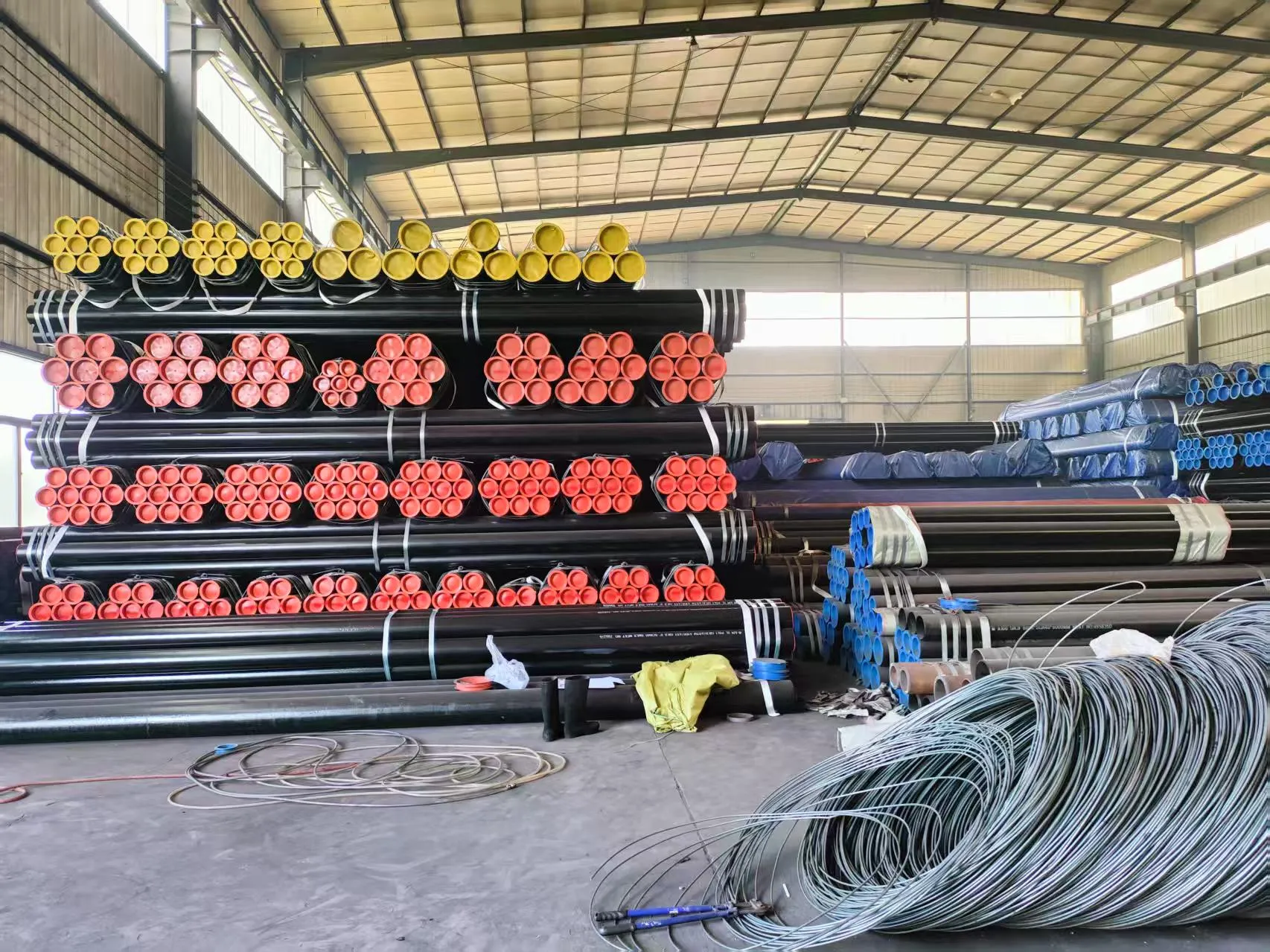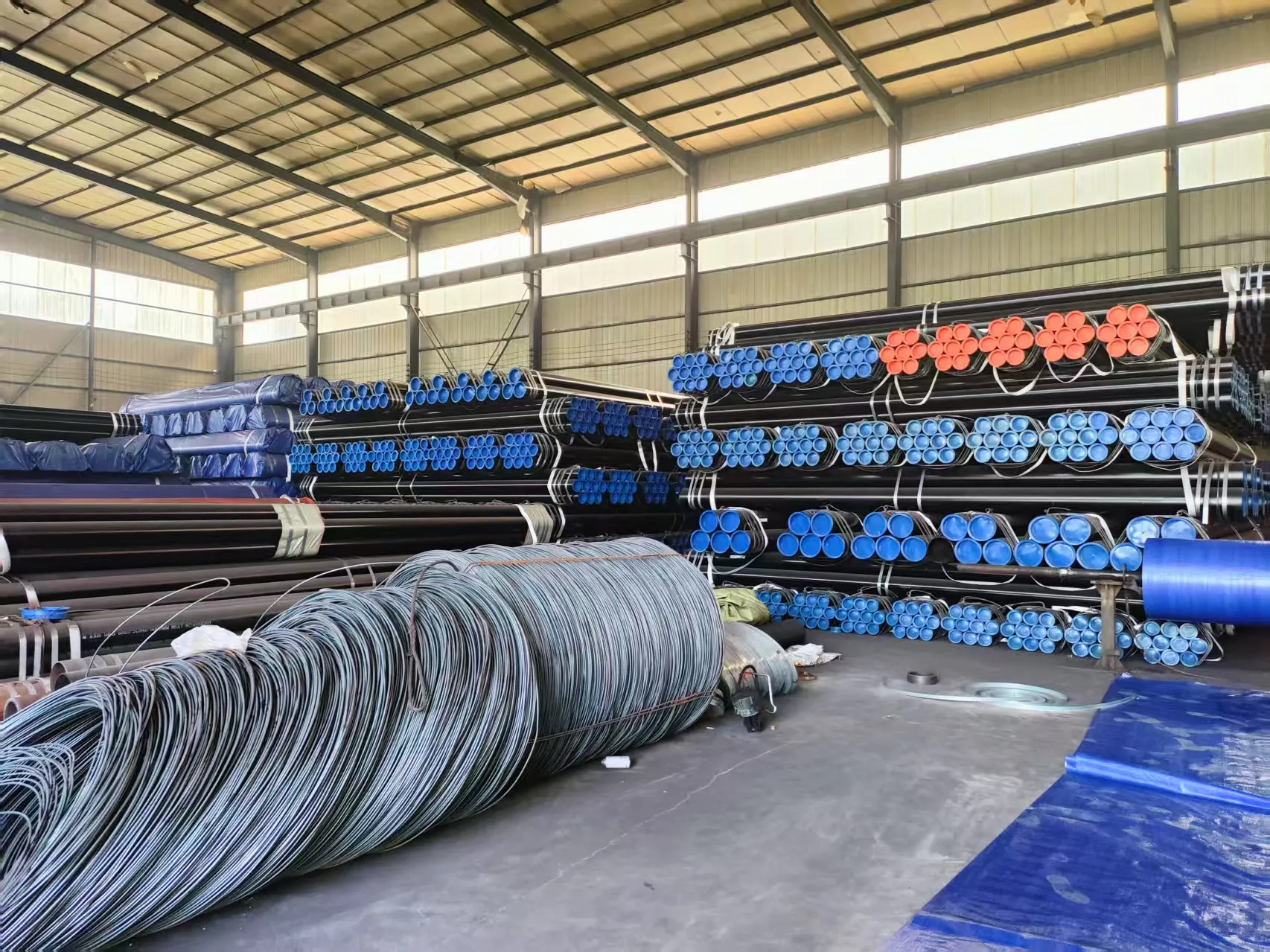Key Characteristics:
- 1.Material Composition:
- - API 5L X52 pipes are made from carbon steel and may include minor alloying elements to enhance properties.
- - Typical chemical composition includes:
- - Carbon (C): ≤ 0.24%
- - Manganese (Mn): 1.20% - 1.60%
- - Phosphorus (P): ≤ 0.025%
- - Sulfur (S): ≤ 0.025%
- - Silicon (Si): ≤ 0.40%
- 2. Mechanical Properties:
- - Yield Strength:Minimum yield strength of 52,000 psi (358 MPa).
- - Tensile Strength: Typically ranges from 71,000 psi to 91,000 psi (490 MPa to 627 MPa).
- - Elongation: Varies with the thickness of the pipe, generally around 20% to 23%.
- 3. Dimensions and Specifications:
- - API 5L X52 pipes are available in various sizes and wall thicknesses.
- - Nominal Pipe Sizes (NPS) range from ½ inch to 48 inches or larger.
- - Common wall thickness standards include:
- - Schedule 40, Schedule 80, among others.
- 4. Manufacturing Process:
- - Pipes can be manufactured using two main processes:
- - Seamless:Providing greater strength and integrity, free from welded seams.
- - Welded:Typically made from flat steel plates that are rolled and welded longitudinally.
- - Manufacturing processes should follow stringent quality control standards involving non-destructive testing (NDT).
- 5. Coatings and Finishes:
- - API 5L X52 pipes may come with various protective coatings to enhance corrosion resistance, such as:
- - Bare steel (uncoated)
- - Fusion Bond Epoxy (FBE)
- - Three-Layer Polyethylene (3LPE)
- - Three-Layer Polypropylene (3LPP)
- 6. Applications:
- - Primarily used in the oil and gas industry for transporting natural gas, crude oil, water, and other fluids.
- - Suitable for high-pressure applications due to its strength and durability.
- - Used in various infrastructure projects, including water supply and distribution systems.
- 7. Standards and Compliance:
- - API 5L X52 pipes comply with national and international standards governing pipeline manufacturing and testing, ensuring reliability and safety.
- - Additional standards such as ISO and ASTM may be applicable depending on specific project requirements.
- 8. Testing and Quality Control:
- - API 5L X52 pipes undergo rigorous testing to ensure quality and integrity, including:
- - Hydrostatic tests to detect leaks and ensure strength.
- - Non-destructive testing (e.g., ultrasonic, radiographic) to evaluate material integrity.
- - Mechanical testing to confirm yield and tensile strength.
- Summary:
- API 5L X52 pipes are strong and reliable carbon steel pipes engineered for high-pressure applications in the oil and gas industry and other industrial sectors. With a minimum yield strength of 52,000 psi, these pipes are designed to work effectively in transporting fluids under pressure and conditions where durability is crucial. When selecting API 5L X52 pipes, considerations should include pipe size, wall thickness, coating options, and compliance with necessary standards to ensure optimal performance in their intended applications. Regular inspections and maintenance are important for ensuring long-term performance and safety in pipeline systems.
Write your message here and send it to us
















